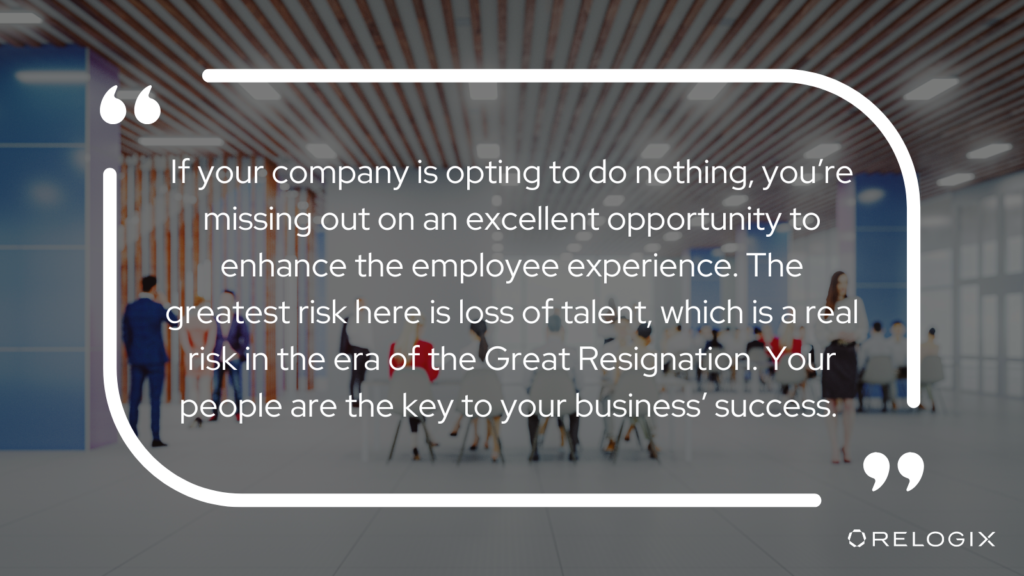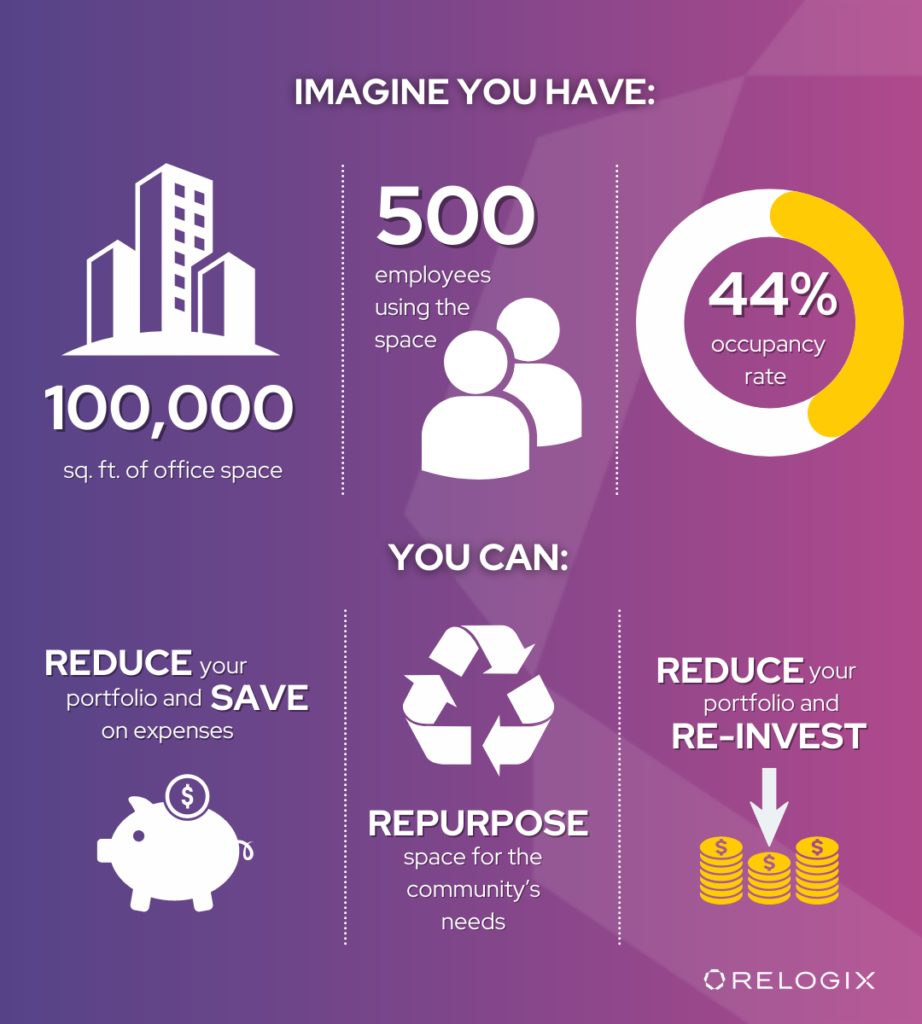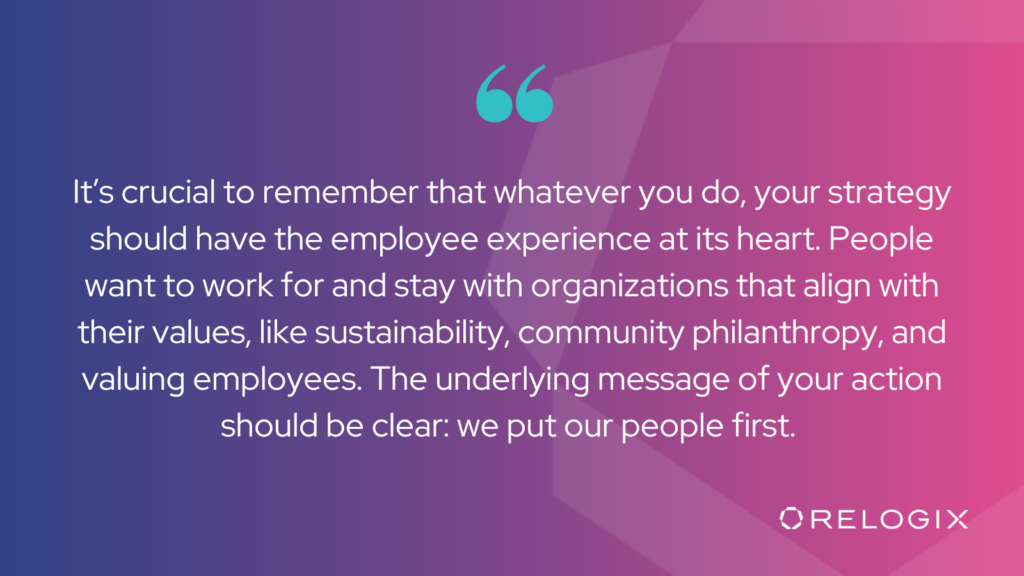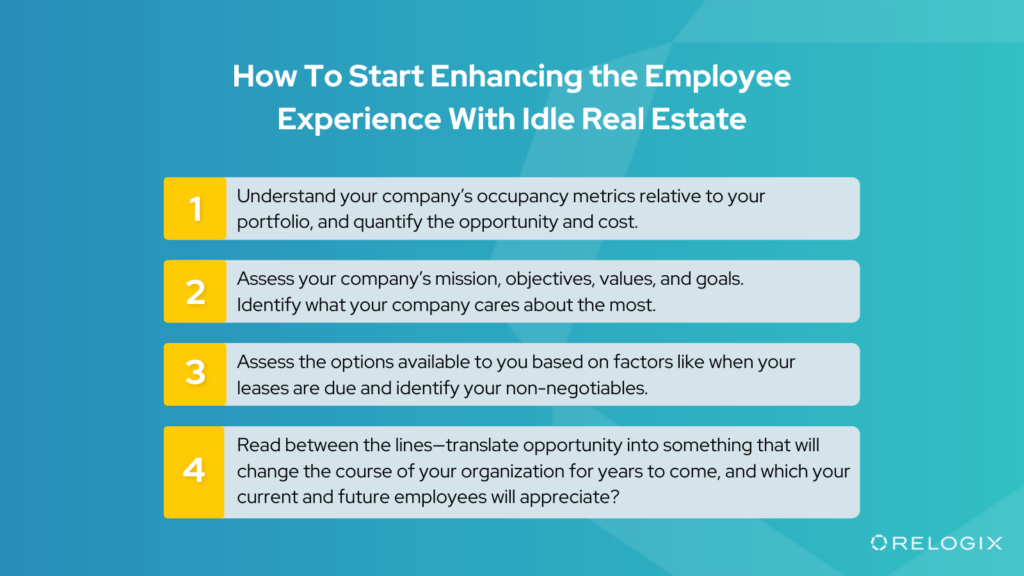The Do Nothing Strategy: The True Cost of Idle Corporate Real Estate
When it comes to making decisions about corporate real estate portfolios these days, waiting it out seems to be the most popular option. Organizations are waiting for signals about how the economy, the pandemic, and labour trends will evolve, and they’re being cautious on making major moves like re-designing, retrofitting, or even shedding excess space.
This may seem like a solid, risk-averse tactic. But the cost of unused corporate real estate is higher than you might think—a “do nothing” strategy is actually highly unfavourable for the overall health of your organization.
If your company is opting to do nothing, you’re missing out on an excellent opportunity to enhance the employee experience. The greatest risk here is loss of talent, which is a real risk in the era of the Great Resignation. Your people are the key to your business’ success.

The Lights Are On, But Most Offices Are Empty
Next to office labour costs, office real estate spend has been the second largest expenditure for most organizations. A recent McKinsey article reported that “Fortune 50 companies alone occupy 2.6 billion sq. ft. of real estate”. A good chunk of that real estate sat mostly empty for long stretches during the pandemic, and continues to do so.
This applies to organizations of all sizes too—workplaces are needlessly sitting idle. Reports of weekly office metrics indicate occupancy rates are hovering at approximately 44.1%, and there has been little to no change in the past 12 weeks. It’s clear just how much space is sitting empty.
The most important consideration here is the wasted cost of holding on to this empty space. A passive approach of waiting for new realities to settle in is, in fact, an active decision not to explore and invest in your organization and your people. It’s a wasted chance to better align your organization’s actions and values with those of your employees, which is key to retaining talent and growing as a company.
From Saving to Investing: What Is Your Purpose?
There’s a long-standing debate in corporate real estate about whether cost savings is a driver or an outcome. Any space reduction or optimization strategy will certainly come with the chance to lower costs—but that’s not the final goal. The actual final outcome depends on having well-defined objectives and goals aligned with your company’s mission and values. Cost savings should be surfacing opportunity discussions about what’s needed to fuel the purpose of your organization.
With office real estate reduction, funds can be freed up to re-invest in other areas of the business and enable growth. You could invest in better technology, implement people programs like learning and development, improve compensation packages—the list goes on. When you think about it like this, it is easy to see how there is a true cost to doing nothing.
Perspective (And Positioning) Is Key: Aligning Strategy with Mission
Forward-thinking companies recognize that change is upon us, and they’re empowering themselves to do something different. Like what?

Imagine you have 100,000 sq ft of office space serving 500 people. A 44% occupancy rate means:
- You could reduce your portfolio by +/- 56,000 sq ft (5,203 sq m) and save the expenses that come from the lease and operating costs
- You have +/- 56,000 sq ft (5,203 sq m) of surplus space, which could be repurposed to suit the company’s or the community’s needs
- You could reduce your portfolio and re-invest some or all of the savings
Whatever you choose to do, it should be tied to a commitment to your organization’s values. Think about how you can use the savings, re-investments, or space to align your strategy with your mission so that ultimately, your people become the priority.
What could that look like?
It could look like one, or a mix of these options. Any space reduced, for example, could be a great opportunity to speak to the value of sustainability. The higher the mobility rate, which is determined by simple daily office occupancy metrics, the more your company can broadcast its commitment to reducing greenhouse gas emissions. Cutting down on the commute for a sizable portion of your people is both popular and environmentally responsible.
Or, if you repurpose some surplus space, think about how this could benefit your community and your people. Maybe you opt to make the space available for events—you could extend the offer exclusively to non-profit charities. Supporting local organizations in the community can help to solidify your company’s philanthropic position.
If you choose to re-invest, where can you put that money to improve your employees’ wellness, well-being, learning and development, or compensation packages?

It’s crucial to remember that whatever you do, your strategy should have the employee experience at its heart. People want to work for and stay with organizations that align with their values, like sustainability, community philanthropy, and valuing employees. The underlying message of your action should be clear: we put our people first.
A “Do Nothing” Strategy Sends the Wrong Message
Just like taking purposeful action sends the right message to your employees about your organization’s values and priorities, doing nothing sends the wrong one. A “do nothing” strategy looks like a desperate clinging to the past. It looks like false hopes of returning to a nostalgic way of living and working.
However, it’s obvious to most of us that the world is not going to return to pre-pandemic ways. We need to change how we live and work. This is the only way to align in purpose so we can all contribute to bettering our lives, our society, and our futures.
…And Sending the Wrong Message Harms Your Organization
The pandemic has taught us a valuable lesson: purpose is at the heart of productivity.
Budgets and the question of where to invest is often contentious. We understand that the goal in budgeting is an increase in revenue and/or a reduction in cost, but it is important to remember that the best outcomes are rarely linear.
At the heart of employee experience is engagement. An employee stays engaged when they feel their organization genuinely cares. Engagement means they relate to their company, experience an alignment of values, and share a sense of purpose. If you and your people do not align on the “why,” engagement—and thereby productivity and profitability—will suffer.

How Do I Start Enhancing the Employee Experience With Idle Real Estate?
- Understand your company’s occupancy metrics relative to your portfolio, and quantify the square foot or square meter opportunity and cost
- Assess your company’s mission, objectives, values, and goals. Identify what your company cares about the most and why that truly matters.
- Assess the options available to you based on factors like when your leases are due and identify your non-negotiables.
- Read between the lines—how can you translate potential opportunity into something that is feasible, that will change the course of your organization for years to come, and which your current and future employees will appreciate?
Need help? Get in touch with Relogix and we’ll get you the data you need to start implementing your new people-focused, pro-active strategy—because the costs of doing nothing are just too high.

